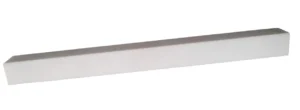-
0 items in quote
No products in the Quote Basket.
SMART CUT® 15A2
DIAMOND & CBN WHEELS
- Application:Precision grinding and finishing, End-face or side grinding, Tool and cutter grinding, Sharpening, Carbide tool grinding
- Bond Availability: Resin Bond, Hybrid Bond
- Available in: Diamond, CBN
- Core Materials: Aluminum, Steel, composite, sintered, abrasive
- Size Availability: 1″ (25.4mm) – 16″ (400mm)
- Diamond Grit Sizes: 25 mesh to 3 microns
- Diamond Concentration: low, medium & high (from 10 con to 150 con)
- Standard Lead Times: 4 to 5 weeks.
- Expedited lead time: 1to 2 weeks is also available at additional cost
DESCRIPTION
SPECIFICATIONS
ADVANTAGES
INDUSTRIES USED IN
FAQ
ACCESSORIES
HOW TO ORDER
DESCRIPTION
Shape Characteristics:
The 15A2 wheel shape is typically a toroid or a “dish” shape, with the following characteristics:
- The abrasive section has a dished or saucer-like contour.
- The wheel may have a relatively thin profile, with the abrasive material distributed around the perimeter.
- The center of the wheel is recessed, allowing for specific grinding applications that standard flat wheels cannot achieve.
Application:
- Precision grinding and finishing: The unique shape allows for precision work on profiles and complex shapes.
- End-face or side grinding: The dish shape of the wheel can be suitable for grinding the face or side of tools and parts, making it a good choice for cutter grinding and surface finishing.
- Tool and cutter grinding: The wheel can be used to sharpen the cutting edges of various tools, such as end mills, inserts, and drills.
- Sharpening: The profile of the wheel can make it suitable for sharpening saw blades and other edged tools.
- Carbide tool grinding: If the wheel uses diamond as an abrasive, it can be used for grinding hard materials like carbides. CBN wheels would be used for grinding high-speed steels or other ferrous alloys.
Application for 15A2 Diamond & CBN Wheels:
1. Tool and Cutter Grinding: The wheel is especially suited for grinding the teeth of various cutting tools like carbide inserts, end mills, and other specialized cutting tools. The dish shape allows for clearance when grinding the flutes of cutting tools.
2. Tungsten Carbide Grinding: The diamond version of a 15A2 wheel is perfect for grinding hard materials like tungsten carbide. It’s often used in the manufacture and resharpening of carbide tools, precision grinding of dies, and forming tools.
3. Profile Grinding: The side of the wheel can be used to generate precise contours on parts, which is essential in the manufacture of certain precision components.
4. Surface Grinding: When it is necessary to grind large surface areas, a 15A2 wheel can be used to grind the flat surface with the rim’s periphery, making it suitable for certain surface grinding applications where a precise angle is needed.
5. Sharpening High-Speed Steel Tools: When made with CBN, these wheels can sharpen high-speed steel (HSS) tools without overheating them, preserving the tool’s temper.
6. Saw Blade Grinding: Particularly for carbide-tipped saw blades, the wheel can be used to sharpen the tips and edges of the teeth.
7. Precision Edge Grinding: For precision edge finishing, especially on custom-designed components, the 15A2 wheel can be utilized for fine, controlled grinding.
8. Manufacturing of Woodworking Tools: For the production and sharpening of various woodworking tools, including saws, planer blades, and router bits, where the hardness of the tool material requires the use of a superabrasive like diamond or CBN.
9. Optical Profile Grinding: High-precision machines that rely on profile grinding wheels like the 15A2 to replicate intricate shapes onto metal workpieces.
10. Jewelry Making and Lapidary Work: The wheel’s profile can be employed in the careful shaping and polishing of gemstones and crafting intricate jewelry pieces.
SPECIFICATIONS
- Application:Precision grinding and finishing, End-face or side grinding, Tool and cutter grinding, Sharpening, Carbide tool grinding
- Bond Availability: Resin Bond, Hybrid Bond
- Available in: Diamond, CBN
- Core Materials: Aluminum, Steel, composite, sintered, abrasive
- Size Availability: 1″ (25.4mm) – 16″ (400mm)
- Diamond Grit Sizes: 25 mesh to 3 microns
- Diamond Concentration: low, medium & high (from 10 con to 150 con)
- Standard Lead Times: 4 to 5 weeks.
- Expedited lead time: 1to 2 weeks is also available at additional cost
Tolerances
- Diameter Tolerance: ±0.005 inches (±0.127 mm)
- Thickness Tolerance: ±0.001 inches (±0.025 mm)
- Bore Tolerance: ±0.0004 inches (±0.010 mm)
- Runout runout (TIR) as low as 0.0002 inches (0.005 mm)
ADVANTAGES
Tab Content
INDUSTRIES USED IN
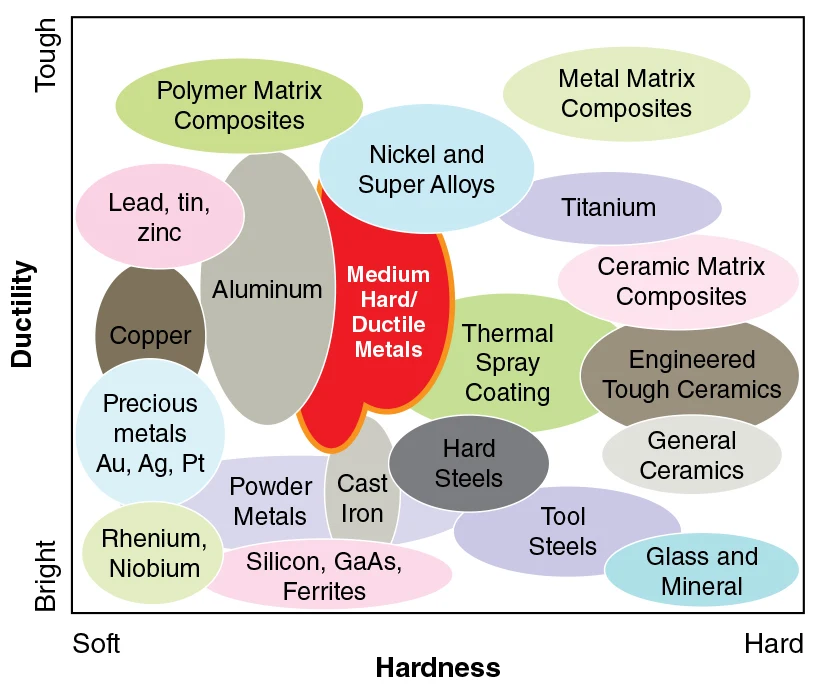
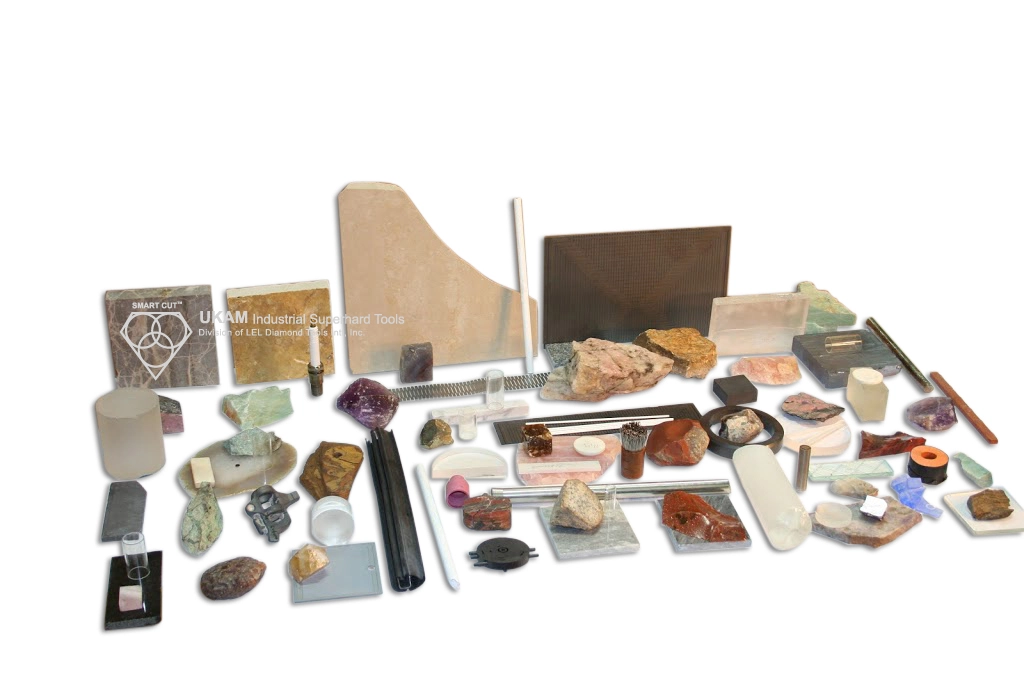
INDUSTRIES USED IN:
- Advanced Ceramics
- Composites
- Glass
- Geology
- Quartz
- Materials Research
- Medical Devices
- Metallography
- Photonics / Optics
- Semiconductor
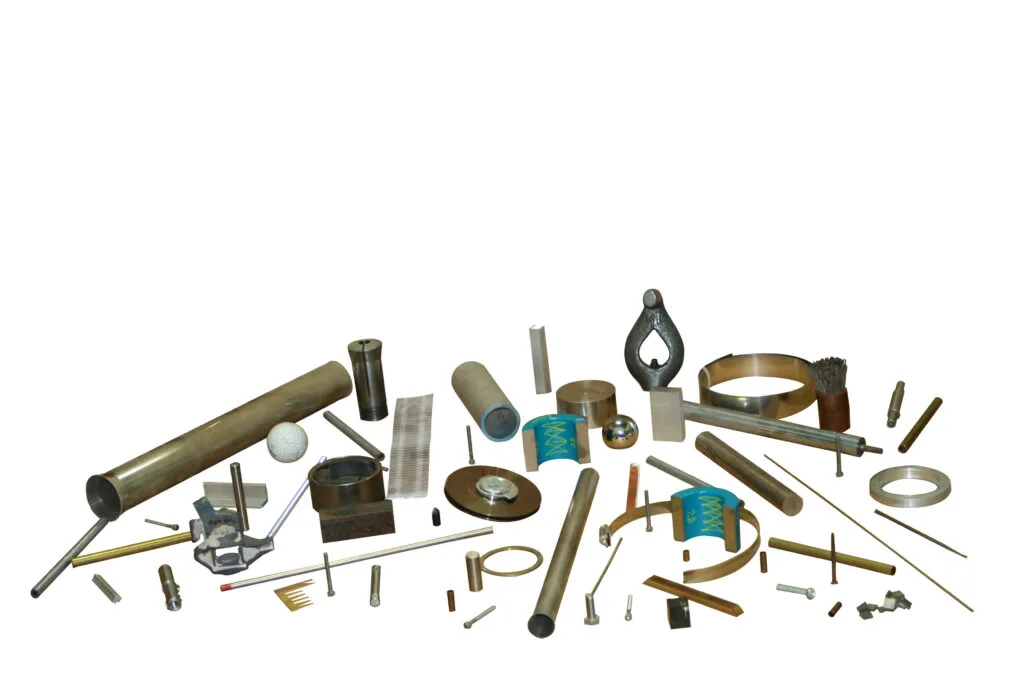
Ferrous & Non-Ferrous Metals:
- Plain Carbon Steels
- Electronic Packages
- Stainless Steels Plastics
- Tool Steels Fasteners
- Aluminum Refractories
- Copper Base Alloys Integrated Circuits
- Magnesium Thermal Spray Coatings
- Titanium Metal Matrix Composites
- Biomedical Wafers
- Petrographic
- PCB.s Ceramics
FAQ
A 15A2 wheel refers to the specific shape and geometry of a grinding wheel, characterized by a dished or saucer-like profile. It is commonly used in precision grinding applications.
A 15A2 Diamond wheel is typically used to grind non-ferrous materials, such as tungsten carbide, ceramics, glass, and in some cases, hardened steel that is not affected by carbon diffusion.
Yes, a 15A2 CBN (Cubic Boron Nitride) wheel is excellent for grinding hardened ferrous materials, such as high-speed steels, tool steels, and other alloy steels.
Tolerances can vary based on the application, but precision 15A2 wheels may have tight tolerances on diameter (±0.005 inches or better), thickness (±0.001 inches), bore (±0.0004 inches), and runout (0.0002 inches TIR), or more relaxed tolerances for less critical applications.
Selection depends on several factors including the material to be ground, the required surface finish, the hardness of the material, and the specific geometry of the component being worked on. It’s best to consult with our engineering team with your specific requirements.
Yes, 15A2 wheels can be used for both wet and dry grinding, but it’s essential to choose the right bond type and follow the manufacturer’s recommendations to prevent overheating and wheel degradation.
Regular dressing and truing are necessary to maintain the wheel’s profile and sharpness. Also, proper storage and handling are vital to prevent damage to the wheel.
Always use the proper personal protective equipment, including safety glasses, gloves, and ear protection. Ensure the wheel is correctly mounted and balanced, and do not exceed the maximum operating speed recommended by the manufacturer.
Yes, grinding wheels are often made to meet industry standards such as ANSI, ISO, and others, which specify requirements for dimensions, tolerances, safety, and performance.
Many manufacturers offer custom-made grinding wheels. You would need to provide the specific requirements of your application, including the material, dimensions, and tolerances needed.
Diamond is the hardest known material and is best for grinding non-ferrous materials and non-metallic materials such as glass, ceramics, and carbides. CBN, on the other hand, is second in hardness to diamond and is used for grinding ferrous materials such as high-speed steels and alloy steels.
Yes, 15A2 wheels can be redressed to restore the profile and cutting ability of the wheel. The method of dressing will depend on the type of wheel and the bond material used.
The optimal spindle speed depends on the wheel size, the material being ground, and the operation performed. It’s crucial to stay within the recommended speed to prevent wheel damage and ensure operator safety.
Store wheels in a dry, moderate temperature environment, away from excessive heat, cold, and moisture. Wheels should be stored in a way that they are not subject to impact, and it’s best to keep them in their original packaging when not in use
A 15A2 wheel can be mounted on various types of grinding machines, such as surface grinders, tool and cutter grinders, or specialized CNC grinding machines. The machine must be capable of operating at the wheel’s required speed and have the capacity for the wheel’s size and weight.
Yes, 15A2 wheels come with various bond types, including resinoid, vitrified, metal, and electroplated bonds. The choice of bond depends on the grinding operation, the material being ground, and the required performance of the wheel.
Yes, we can customize the profile of the 15A2 wheel to suit unique grinding operations. This may include alterations to the grit size, concentration, and specific contours needed for particular tasks.
The frequency of dressing depends on the wheel’s usage. It should be dressed when you notice a decrease in grinding performance or visual defects on the wheel’s surface. For precision operations, more frequent dressing may be required to maintain optimal wheel condition.
Wheel vibration can be due to several factors, including imbalance, incorrect mounting, or a damaged wheel. Stop the operation immediately, unmount the wheel, and inspect it for damage. Rebalance the wheel if necessary and ensure it is correctly mounted before resuming operation.
Yes, new wheels should be gradually brought up to speed and initially used with light cuts to condition the wheel for optimal performance.
Indicators that a 15A2 wheel needs replacing include a decrease in grinding performance, visible damage, or if the wheel has become too small after repeated dressings. Always follow our guidelines on wheel lifespan and safety checks.
Yes, 15A2 wheels are often used on CNC grinding machines due to their precision profile. Ensure that the wheel’s specifications are compatible with the machine’s capabilities.
Grit size is chosen based on the finish required and the material being ground. Finer grits are used for a finer finish and for harder materials, while coarser grits are used for rapid material removal or softer materials.
The maximum operating speed for a 15A2 wheel is determined by the wheel diameter, the wheel composition, and the safety standards of the manufacturer. Exceeding this speed can be dangerous and is not recommended.
Wheel concentration refers to the density of the abrasive particles. Higher concentration can result in a longer-lasting wheel and improved surface finish, while lower concentration may be more cost-effective for rough grinding.
Always handle wheels with care to avoid damage, ensure proper mounting and balancing before use, use guards and appropriate personal protective equipment, and comply with the machine’s safety protocols.
Balancing is crucial to prevent vibration, ensure the accuracy of the grinding operation, reduce wear on the grinding machine, and provide a better finish on the workpiece.
Glazing or loading up can occur if the wheel’s grit is too fine for the material being ground, the wheel is not dressed frequently enough, or if there is insufficient coolant. Adjusting these parameters can often resolve the issue.
Yes, proper ventilation is necessary to control dust and fumes. Coolants and lubricants should be managed in compliance with environmental regulations. Disposal of used wheels should also follow local environmental guidelines.
Yes, coolants are often recommended to improve the grinding process, reduce heat generation, and prolong the life of the wheel. The type of coolant and its application will depend on the material being ground and the grinding operation.
The loading parameters, such as feed rate and depth of cut, will vary depending on the material hardness, wheel grit, and desired finish. Overloading the wheel can cause excessive wear and potential wheel failure.
The bond type (resin, vitrified, metal, or electroplated) affects the wheel’s wear rate, how well it holds the abrasive, and its performance in heat dissipation. The choice of bond is critical and is based on the specific grinding application.
Burning during grinding is often a result of excessive heat generation. This could be due to incorrect wheel selection, excessive feed rates, insufficient cooling, or a dull wheel that needs dressing.
Yes, optimizing the grinding parameters such as wheel speed, feed rate, and dressing routine can increase efficiency. Selecting the correct wheel specification for your application is also crucial.
Surface finish problems can often be corrected by adjusting the grit size, using a different bond material, altering the wheel speed, or improving the coolant flow to the grinding zone.
The life of a grinding wheel varies widely depending on its use. Factors such as the grit size, bond type, material ground, and grinding conditions all affect lifespan. Following the manufacturer’s recommendations for use can help ensure maximum wheel life.
Chipping may be prevented by choosing a wheel with the appropriate grit size and bond strength for the material being ground, ensuring the wheel is dressed properly, and adjusting the feed and speed rates.
Signs of an out-of-balance wheel include increased machine vibration, poor surface finish, and irregular wheel wear. Balancing should be performed regularly or whenever you mount a new wheel.
While some wheels are versatile enough to accommodate different materials, it’s generally best to select a wheel specifically designed for the material you’re working with to ensure optimal performance and safety.
Synthetic diamond wheels are generally more consistent in quality and are suitable for a broad range of applications. Natural diamond wheels may be used for specific applications requiring particular crystalline properties.
If a wheel shows any sign of a crack or other significant damage, it should be taken out of service immediately and discarded safely. Using a cracked wheel is extremely hazardous and can lead to wheel failure.
The wheel should be dressed using a proper dressing tool that is suitable for the wheel’s material and grit. The dressing should be done at suitable intervals to maintain the correct wheel profile and sharpness.
The angle of inclination can affect the contact area between the wheel and the workpiece, thereby influencing grinding efficiency and the surface finish. Proper setup according to the grinding requirements is essential.
This may be a sign that the wheel needs dressing or that it has become glazed. Dress the wheel to expose fresh abrasive grains. If the problem persists, consider whether the wheel specification is suited to the material and application.
Some components of used grinding wheels can be recycled. Check with local regulations and contact the manufacturer to understand if there are recycling programs or proper disposal methods recommended for used wheels.
Ensure that the spindle and wheel hole fit properly without forcing. The wheel should be mounted with blotters on each side and secured with the appropriate flanges. Tighten only enough to hold the wheel firmly.
Different coolants can affect the wheel’s cutting efficiency and the surface finish of the workpiece. Oil-based coolants can lead to a better finish and reduced wheel wear, while water-based coolants are more effective in heat dissipation.
The amount of material removed during dressing should be enough to expose fresh abrasive grains and restore wheel geometry. Too much dress can shorten the wheel’s life, while too little may not correct performance issues.
Excessive noise can be caused by an unbalanced wheel, loose flanges or spindle, or a mismatch between the wheel and the workpiece material. Ensure all components are properly fitted and the correct wheel is used.
Temperature and humidity can impact the wheel’s bond and its abrasive properties. Storing wheels in a controlled environment is recommended to maintain their performance.
Discoloration may indicate too much heat is being generated. Review the coolant flow, wheel speed, feed rates, and dressing to ensure they’re all appropriate for the material and grinding conditions.
Wheels should be transported carefully to avoid shocks that could create cracks. They should be laid flat on a stable surface and secured to prevent rolling or sliding.
Regular maintenance includes cleaning the machine, checking and adjusting lubrication systems, inspecting and balancing wheels, and ensuring that all components are in good working condition.
Use a profile gauge or other precise measuring tools to check the contour of the wheel after dressing. This ensures that the wheel’s profile matches the required dimensions for the grinding task.
Accordion Content
While some 15A2 wheels can be used for both, it’s important to verify with the manufacturer. Dry grinding generates a lot of heat and dust, so proper ventilation and heat management are necessary.
Wheel speed is influenced by the material being ground, the hardness of the wheel, the desired surface finish, and the wheel’s diameter. Always adhere to the manufacturer’s recommended speed limits.
The wheel shape determines the types of grinding operations it can perform. The 15A2 shape is typically used for tool and cutter grinding, end face or side grinding, and other precision grinding tasks.
Consult with local waste management regulations and the wheel manufacturer for proper disposal guidelines. Grinding wheels should not be thrown in regular trash due to their abrasive and potentially hazardous nature.
SMART CUT® 15A2
DIAMOND & CBN WHEELS
ACCESSORIES
Showing 1 – -1 of 16 results Showing all 16 results Showing the single result No results found
Sort by Name A – Z
Filters Sort results
Reset Apply
Image | Item No. | Description | Price | Quantity | Add to cart |
|---|---|---|---|---|---|
Color: 5/8″-11″ thread. Fits into drill press chuck. Shank adapter threads into 5/8″-11″ female thread of diamond drill. Can be used with any other tool with 5/8″-11″ thread. | $26.72 | Max: Min: 1 Step: 1 | |||
Color: 5/8″-11″ thread. Fits into drill press chuck. Shank adapter threads into 5/8″-11″ female thread of diamond drill. Can be used with any other tool with 5/8″-11″ thread. | $22.46 | Max: Min: 1 Step: 1 | |||
1 Gallon Blue SMART CUT® General Materials Formula Synthetic Water Soluble Coolant | $99.81 | Max: Min: 1 Step: 1 | |||
1 Quart Blue SMART CUT® General Materials Formula Synthetic Water Soluble Coolant | $34.81 | Max: Min: 1 Step: 1 | |||
5 Gallons Blue SMART CUT® General Materials Formula Synthetic Water Soluble Coolant | $317.41 | Max: Min: 1 Step: 1 | |||
55 Gallons Blue SMART CUT® General Materials Formula Synthetic Water Soluble Coolant | $1,745.00 | Max: Min: 1 Step: 1 | |||
1/2″ x 1/2″ x 6.0″ White Recommended for coarser grits found in segment wheels, core drills, or Blanchard grinding. Excellent performance on 120 grit tools. | $8.65 | Max: Min: 1 Step: 1 | |||
1.0″ x 1.0″ x 6.0″ White Recommended for coarser grits found in segment wheels, core drills, or Blanchard grinding. Excellent performance on 120 grit tools. | $15.99 | Max: Min: 1 Step: 1 | |||
1/2″ x 1/2″ x 6.0″ White For use on diamond tools 150 to 220 Grit Size. | $8.65 | Max: Min: 1 Step: 1 | |||
1.0″ x 1.0″ x 6.0″ Black Recommended for use in Diamond Tools 150 Grit Size (mesh size) or finer. | $15.39 | Max: Min: 1 Step: 1 | |||
2.0″ x 2.0″ x 6.0″ Black Recommended for use in Diamond Tools 150 Grit Size (mesh size) or finer. | $39.47 | Max: Min: 1 Step: 1 | |||
1.0″ x 1.0″ x 6.0″ Black Recommended for coarser grits found in segment wheels, core drills, or Blanchard grinding. Excellent performance on 120 grit tools. | $15.99 | Max: Min: 1 Step: 1 | |||
2.0″ x 2.0″ x 6.0″ Black Recommended for coarser grits found in segment wheels, core drills, or Blanchard grinding. Excellent performance on 120 grit tools. | $39.47 | Max: Min: 1 Step: 1 | |||
$154.87 | Max: Min: 1 Step: 1 | ||||
$154.87 | Max: Min: 1 Step: 1 | ||||
$235.00 | Max: Min: 1 Step: 1 |
HOW TO ORDER
What We Do
we manufacture custom tools to fit your specific requirements and specifications. We have the capability to manufacture over 30,000+ different types of custom diamond & cbn tools and consumables to better fit your particular material, application, specifications, and requirements
Why Custom Tools?
Not all requirements are the same. We manufacture tools to fit your particular equipment, tolerances, surface finish, life span, and overall see the difference tools optimized for your application can make?
How We Work
We will work with you to determine your needs, and develop the right bond formulation, concentration, and grit sizes. Our tools are designed and specially selected to provide maximum possible tool life, for your desired cut quality and speed.
Custom Tool Manufacturing Process
The following process describes custom tool manufacturing process form initial first inquiry to final delivery.

DISCOVERY
We discuss your specific requirement in detail to determine the best solution for your needs.

RECOMMEND SOLUTION
We provide you with recommend options for your application based on your requirements along with quotation and lead time.

PREPAIRE TO IMPLEMENT
When you are ready to order, we send you confirmation of the tool specification always in writting. Your order is placed in que to be produced within the quoted lead time.

IMPLEMENT & DELIVER
The finished products go through quality control process and also inspected for conformance to specification agreed upon. The order is packaged and shipped to you using your requested shipping method. Certificate of conformance or any other documentation can be provided upon request.

SERVICE &
SUPPORT
We follow up with you to receive feedback on the tool performance. We also provide usage recommendatios and technical support if needed.
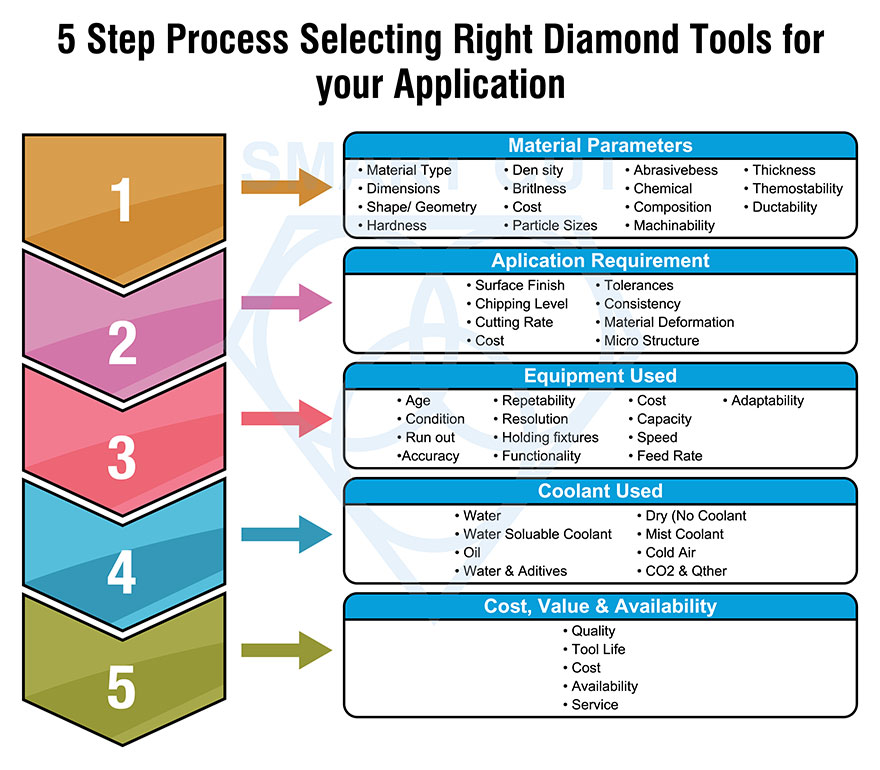
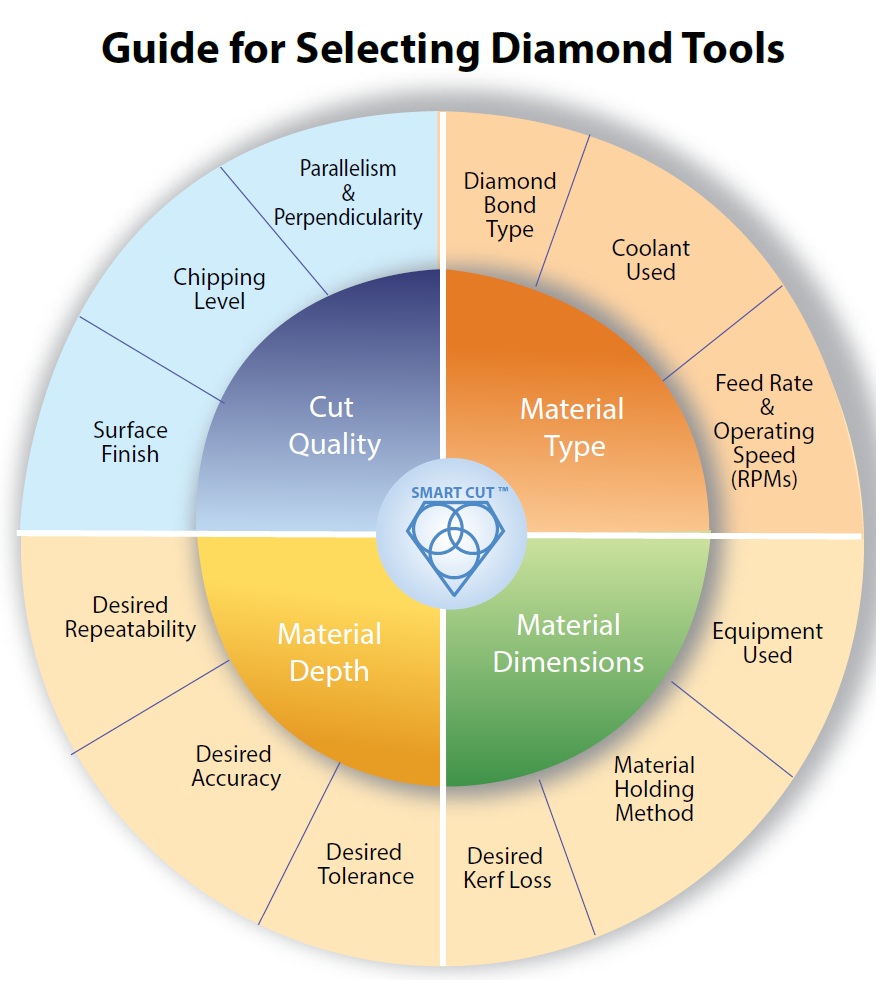
Custom Diamond and CBN wheel FAQ
To place an order, you can contact our customer service team via phone, email, or our website. You will need to provide specific details about your grinding application, including material to be ground, required wheel dimensions, and desired grit size.
Yes, we are happy to help. We will send you a question are asking many questions about your requirements, how the tool will be used and the usage environment. This information is very important for helping us understand your unique specifications and requirements. The more information you can provide the more accurate recommendation and solutions we can provide.
Usually there is no minimum order for custom tools, with few acceptations. We encourage you to try small quantity to make sure you are happy with the tool performance first. As additional fine tuning and improvements can be made based on your feedback.
Lead time varies depending on tool specification and current schedule. Usually the lead time range can be from 1 to 5 weeks. expedited lead time of 1 to 2 weeks is usually available at additional cost if needed
Prices are based on tool specification, tolerances, quantity and lead time. Our prices are pretty competitive for world market. We regularly export our products to dozens of different countries across all continents. Usually custom products in small quantity the pricing is usually higher then standard of the shelf products which are mass produced in large quantities.
We can provide hand sketch if needed. if you need drawing we can create in solid works or auto cad for a small fee which may be reimbursable upon receipt of order
Over many decades we have made and sold thousands of different types of unique and one of a kind tools for almost every application. we maintain records of bond formulations and specifications used over many years we have also acquired the “know how” of several other US tool manufacturers that have produced custom tools over many decades, some going far back as to 1960’s. we also have our own R & D research program and we regularly work with different research originations and outside consultants. Most of the time we produce the right tool formulation first time, but sometimes we can make additional improvements second and third time around. Our goal is to make you happy
We ask lot of detailed question about tool specification and your usage process. Sometimes it may be worthwhile for you to send us your used tool so we can inspect it.
Yes we can provide basic recommendations and recommended usage information. If you need specific hands on approach such as “process development” this can be done on case by case based for a fee. If we are not able to help we can often recommend independent outside consultant or organization that can assist.
For a custom wheel order, you should provide the following information:
• Type of wheel (Diamond or CBN)
• Wheel dimensions (diameter, thickness, and arbor hole size)
• Grit size
• Material to be ground
• Grinding machine details
• Desired surface finish
Yes, you can request a specific bond type based on your grinding application. Common bond types include resin, vitrified, metal, and electroplated.
The lead time for custom wheels varies depending on the complexity of the wheel and our current production schedule. Typical leads times range from 4 to 5 weeks. Expedited lead time of 1 to 2 weeks is also available at additional cost if needed. Our customer service team will provide an estimated delivery date when you place your order.
Due to the custom nature of these wheels, they are typically non-returnable. However, if the wheel does not meet the specified requirements or is defective, we will work with you to resolve the issue.
Yes, you can order a sample wheel to test on your application before placing a bulk order. We highly encourage that you test the wheel for your particular application in your environment. Please contact our customer service team for more information.
Yes, we offer discounts for bulk orders. Please contact our sales team for more information.
Proper care and maintenance are essential to ensure the longevity and performance of your wheel. You should regularly clean the wheel, check for any damage, and use it at the recommended speed. Additionally, it’s important to use the correct coolant and dressing tools.
Yes, we can customize the wheel profile to meet your specific requirements. Please provide detailed drawings or specifications of the profile you need when placing your order.
Diamond wheels are suitable for grinding non-ferrous and non-metallic materials such as glass, ceramics, and tungsten carbide. CBN wheels are ideal for grinding ferrous materials such as steel, cast iron, and nickel-based alloys.
Yes, we have a team of experienced engineers and technicians who can provide technical support and advice for your specific grinding application.
Yes, you can request specific tolerances for your custom wheel. Please provide the required tolerances when placing your order, and we will do our best to meet your specifications.
Once your order has been placed, you will receive an order confirmation with a tracking number. You can use this number to track the status of your order on our website or contact our customer service team for updates.
We will do our best to accommodate any changes to your order, but please note that changes may not be possible once the production process has started.
We accept various payment methods, including credit card, PayPal, and bank transfer. Please contact our sales team for more information.
Cancellations are handled on a case-by-case basis. If the production process has not started, we may be able to cancel your order. However, once production has begun, cancellations are generally not accepted.
A balanced wheel is essential for optimal performance and safety. If you notice any vibrations or irregularities during operation, your wheel may be out of balance. Please contact our technical support team for assistance with balancing your wheel.
Yes, we offer a warranty on our custom wheels. The length and terms of the warranty will depend on the specific wheel and application. Please contact our sales team for more information.
The grit size should be selected based on the material to be ground and the desired surface finish. A coarser grit is generally used for rapid material removal, while a finer grit is used for a smoother finish. Our technical support team can help you choose the right grit size for your application.
Yes, we can manufacture custom wheels to fit specific brands and models of grinding machines. Please provide the make and model of your machine when placing your order.
Yes, we ship custom wheels internationally. Please contact our sales team for more information on shipping options and costs.
Resin bonds are flexible and suitable for grinding materials that are prone to heat damage. Vitrified bonds are rigid and offer high precision grinding. Metal bonds are durable and suitable for grinding hard materials. Electroplated bonds have a single layer of abrasive and are used for precision grinding.
A custom wheel may be necessary if your application requires specific dimensions, grit sizes, bond types, or shapes that are not available in standard wheels. Our technical support team can help you determine if a custom wheel is necessary for your application.
Diamond is the hardest known material and is suitable for grinding non-ferrous and non-metallic materials. CBN is the second-hardest known material and is suitable for grinding ferrous materials.
Yes, you can request a specific concentration of Diamond or CBN in your custom wheel. The concentration will affect the wheel’s performance and life.
Please refer to local regulations and guidelines for disposing of grinding wheels. In general, worn-out wheels should be treated as industrial waste and disposed of accordingly.
Yes, we can manufacture custom wheels with specific colors or logos. Please provide your requirements when placing your order.
Yes, we can manufacture a custom wheel with different abrasive grains to suit specific grinding applications.
Regularly clean your custom wheel to remove any accumulated grit, dust, and swarf. Avoid exposing the wheel to moisture to prevent corrosion or damage to the bond. Store the wheel in a dry and cool place away from direct sunlight.
Always wear safety goggles, gloves, and other appropriate personal protective equipment when using any grinding wheel. Follow the manufacturer’s guidelines and safety instructions for your specific grinding machine.
The performance of a custom wheel can be measured in terms of material removal rate, wheel wear rate, surface finish quality, and overall efficiency.
The wheel speed will depend on the specific grinding application, material to be ground, and the wheel’s dimensions. Our technical support team can help you determine the optimal wheel speed for your application.
Yes, you can specify the hardness level for your custom wheel, which will affect its grinding performance.
Our custom wheels comply with industry standards and regulations, including ANSI, ISO, and OSHA. Specific certifications may vary depending on the wheel and application.
Yes, you can request a custom wheel with specific porosity to achieve desired grinding performance and coolant flow.
You can conduct a trial run with the custom wheel on your grinding machine, following all safety guidelines. Observe the wheel’s performance in terms of material removal rate, surface finish quality, and overall efficiency. Our technical support team can assist you in evaluating the wheel’s performance.
Factors that affect the life of a custom wheel include the type of material being ground, the grit size, bond type, wheel speed, and coolant usage.
Yes, you can specify whether the custom wheel is intended for wet or dry grinding, and we will manufacture the wheel accordingly.
The bond type should be selected based on the material to be ground, desired surface finish, and grinding machine characteristics. Our technical support team can help you choose the right bond type for your application.
The minimum order quantity for a custom wheel depends on the specific requirements and dimensions of the wheel. For most wheels there is no minimum order quantities. Please contact our sales team for more information.
Yes, you can request a quote for a custom wheel through our website by providing the specific requirements and dimensions for your wheel.
Yes, you can specify the face width or thickness for your custom wheel, and we will manufacture the wheel accordingly.
The wheel bond plays a crucial role in holding the abrasive grains together. The bond type affects the wheel’s wear rate, grinding performance, and the finish quality of the workpiece.
Yes, we can manufacture custom wheels with specific profile shapes to meet your unique grinding needs. Please provide a detailed drawing or specifications of the profile shape when placing your order.
If you’re not satisfied with the performance of your custom wheel, please contact our customer service team immediately. We will work with you to address any issues and find a suitable solution.
The abrasive concentration in a wheel is typically measured as a percentage of the volume of abrasive grains to the total volume of the wheel. A higher concentration means more abrasive grains and typically results in a longer wheel life and better performance.
The wheel’s hardness affects its ability to resist wear and maintain its shape during grinding. A harder wheel typically lasts longer but may produce a rougher surface finish.
Yes, we can manufacture custom wheels with specific arbor hole sizes to fit your grinding machine.
Yes, we can manufacture custom wheels with specific grinding face geometries to meet your unique requirements. Please provide detailed drawings or specifications when placing your order.
Factors to consider when choosing the grit size include the material to be ground, desired surface finish, and grinding operation type. A finer grit is typically used for finishing operations, while a coarser grit is used for roughing operations.
The wheel shape affects how the abrasive grains interact with the workpiece, influencing the grinding performance and resulting surface finish.
Yes, we can manufacture custom wheels designed specifically for grinding materials such as glass or ceramics.
Wheel balance is critical for achieving optimal grinding performance and preventing vibration and machine wear.
Yes, you can specify the bond hardness for your custom wheel, which will affect its grinding performance.
The wheel diameter affects the peripheral speed of the wheel, which in turn influences the grinding performance and resulting surface finish.
The type of abrasive grain (e.g., Diamond, CBN, aluminum oxide) affects the wheel’s hardness, sharpness, and heat resistance, which in turn influences the grinding performance.
Yes, we can manufacture custom wheels with specific profiles for gear grinding applications. Please provide detailed specifications or drawings when placing your order.
Factors to consider when choosing the bond type include the material to be ground, grinding operation type, wheel speed, and desired surface finish.
Wheel speed affects the material removal rate, heat generation, and resulting surface finish of the workpiece.
Yes, we can manufacture custom wheels with specific porosity levels to meet specific grinding requirements.
Features
- Universal Application
- Longer Life
- Precision Tolerances
- Easy to Use
- Almost Unlimited Number of Options
- Custom Manufacturing
Benefits
- Better Surface Finish
- Less Chipping
- Minimum & No Material Deformation
- No Glazing
- Minimum Heat Generation
- Faster & Freer Cutting Action
- Beter Value
- Faster Return On Investment
How SMART CUT® Bond Works?
Step 1
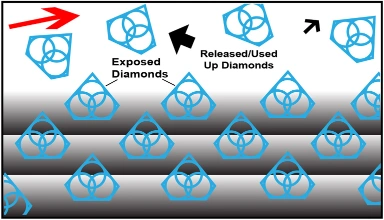
Sharpest And Finest Quality Diamonds
The newly exposed diamonds don’t effect diamonds already working on the material. Unlike many other diamond bonds, diamonds in a SMART CUT® Bond remains sharp and grow sharper with each cut, prolonging product life and consistent performance.
Step 2
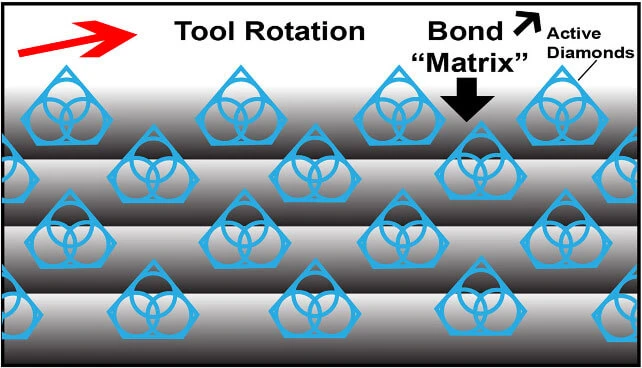
Diamonds or CBN Crystals
Diamonds or CBN Crystals are activated only at the exposed layer. As Bond Matrix layer begin to wear out, diamonds in a new Bond Matrix layer are immediately activated, substituting the already used up diamond layer. The SMART CUT® Diamond Hybrid Bond makes sure every diamond is in the right place and at the right time, working where you need it most.
Step 3
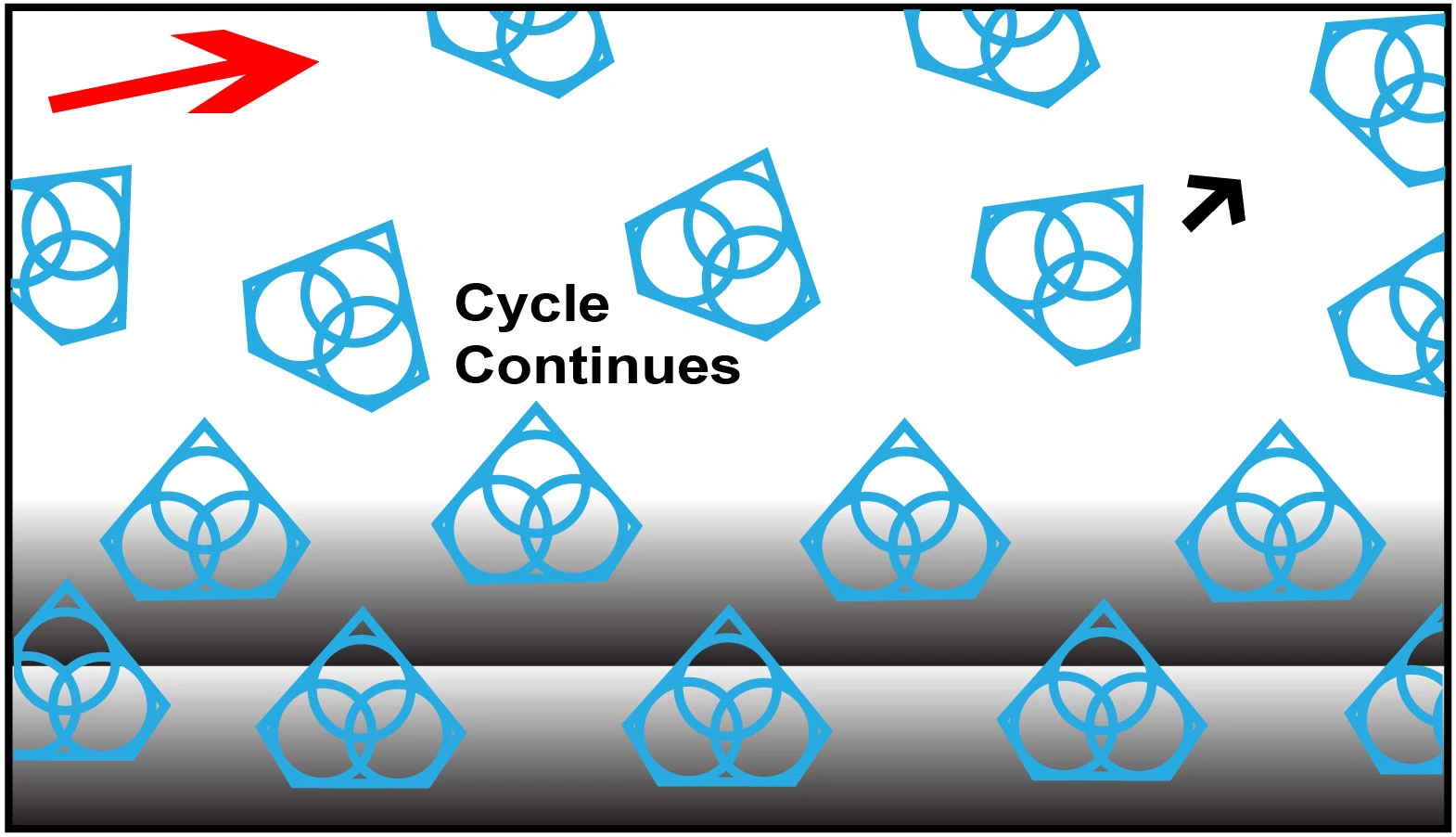
Advanced Formulated Open Diamond Bond Design
This advanced formulated open diamond bond design insures minimal chipping, fast cut, constant speed of cut, minimal cutting noise, and most important of all, consistent performance.
Better Cut Quality
& Less Material Deformation
Diamond & CBN tools with SMART CUT® technology make any work much faster & easier, Thousands of sharp and high quality diamond or CBN particles oriented and evenly distributed on both matrix, allow most jobs to be completed by applying little or only moderate amount of pressure even on the most toughest and challenging materials. Freeing the user from constantly having to dress and renew the diamond layer.
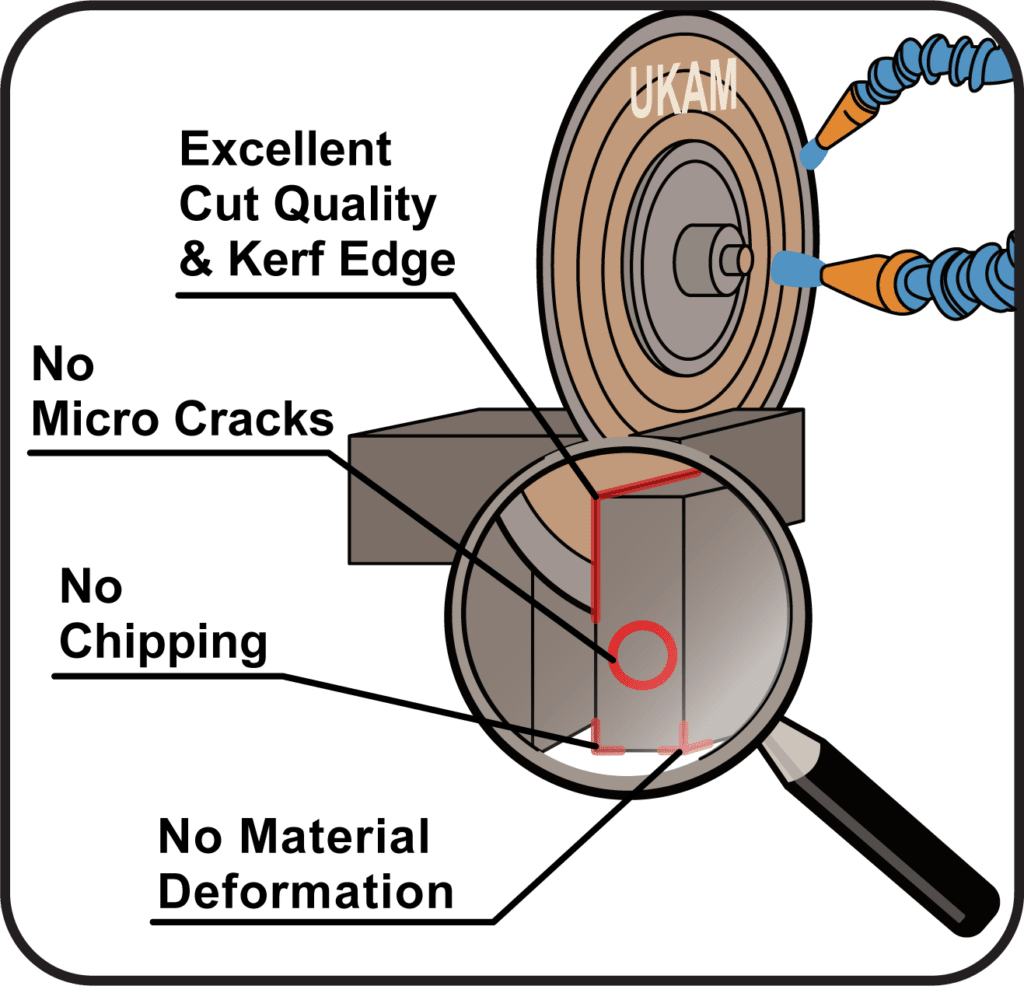
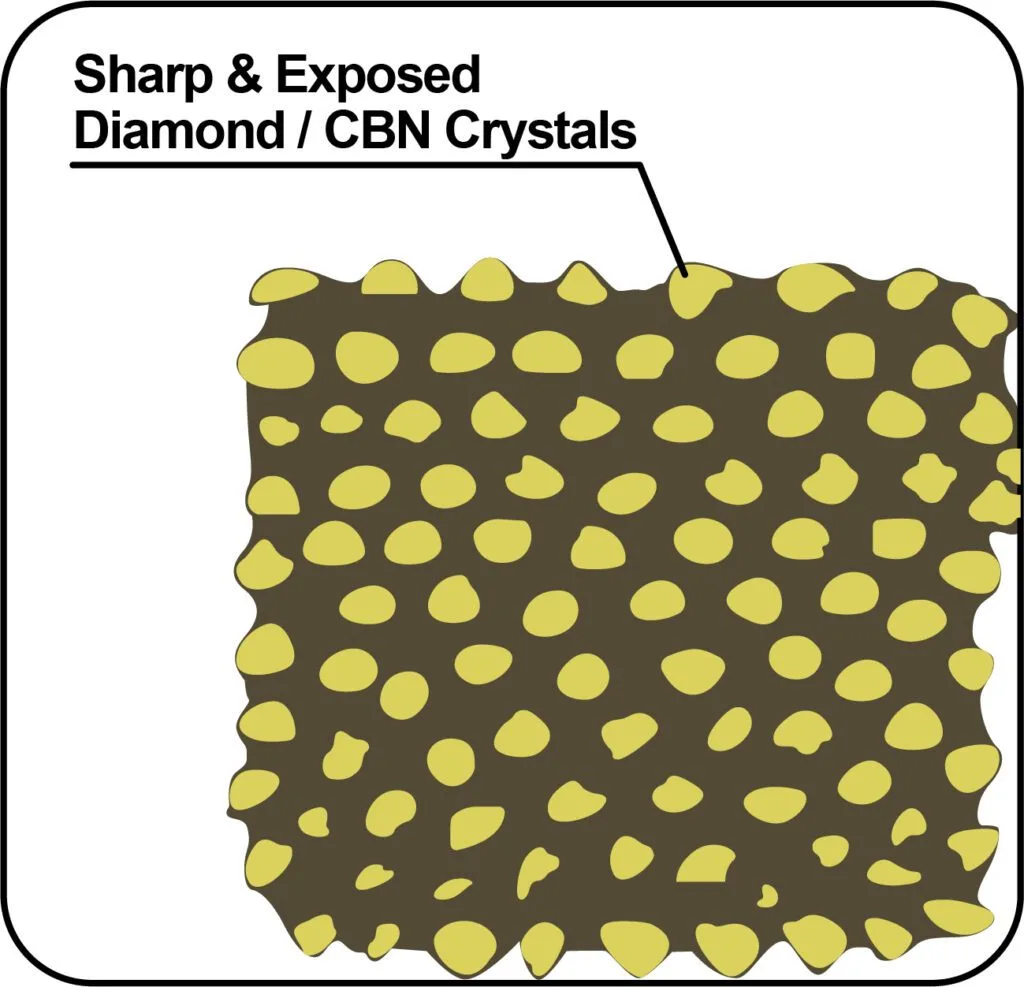
No Glazing
Diamond & CBN tools with SMART CUT® technology require minimum dressing, the bond renews itself.

More Consistent Performance
Diamond & CBN Wheels are produced using only the highest quality raw materials are used in manufacturing process. Utilizing world class quality control, inspection, and measurement equipment. Highly Experienced Engineers constantly monitor and control all material input & output at all stages of manufacturing process. Insuring product consistency for use in demanding & sensitive applications SMART CUT® DIAMOND & CBN wear evenly, and are known for their consistency. You will get consistent cutting speed, and overall consistent performance, with minimum amount of dressing.
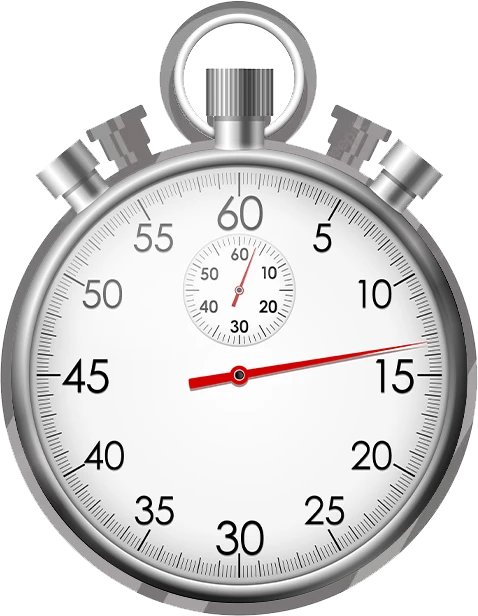
Faster Cutting Action
Diamond & CBN tools made utilizing SMART CUT® technology are much more aggressive than your conventional tools. They can cut faster, while still leaving behind a smooth finish free of material deformation.

Longer Life
In most cases tools manufactured utilizing SMART CUT® technology, will outlast other conventional material (sintered), resin, and nickel bonded diamond & CBN tools. SMART CUT® diamond & CBN tools are more sturdy than tools manufactured with conventional technologies. They are capable to retain their form and bond configuration all the way through the tools life.

Best Performance & Value on the Market
SMART CUT® Diamond & CBN Wheels are the best investment you can make! Although we may not always be the lowest cost solution provider. Our Diamond & CBN wheels can provide the best ROI. Designed for users that understand and appreciate quality. They will more than pay for themselves in terms of overall performance and provide best Return on Investment.
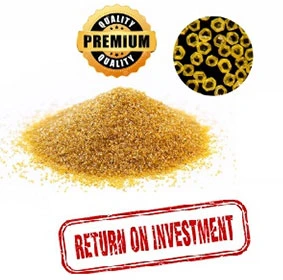
Manufactured Using The Highest Quality Raw Materials
Only the highest quality synthetic diamonds and raw materials are used in the manufacturing process. The highest quality standards and product consistency is maintained, using sophisticated inspection and measurement equipment.
Why Choose Us?
Optimize your application to ultimate level of efficiency
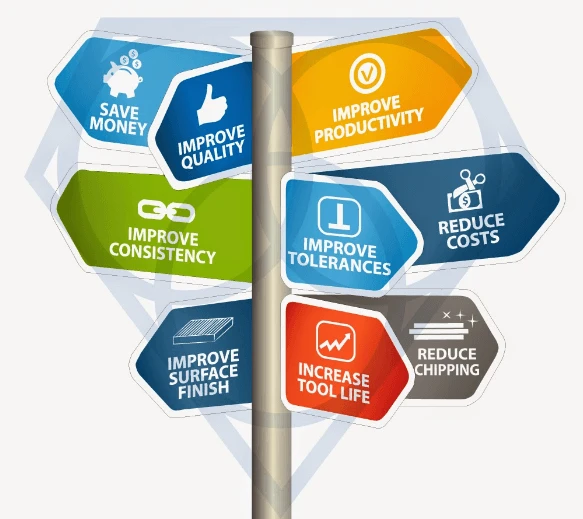
- Unmatched Selection For Many Applications
- Unmatched Technical Support & Expertise
- Superior Quality & Consistency
- Super Technology & innovation
- Immediate Worldwide Delivery
- American Based Manufacturer
-
Custom
Manufacturing - Better Value manufacturer Direct Price
Diamond & CBN Wheel
Selection Variables

Diamond Concentration
The concentration of diamond or cubic boron nitride (CBN) in grinding wheels significantly influences both the wheel's lifespan and its effectiveness in grinding. Typically, a higher concentration of these abrasives is recommended for softer, more abrasive materials to enhance the durability of the wheel by spreading the wear across more abrasive particles. This setup, however, may reduce the grinding speed due to the increased friction from the many cutting points involved.
Wheels with a lower concentration of diamonds or CBN are best suited for grinding ultra-hard and brittle materials, such as ceramics and glass. With fewer abrasive particles, each one exerts more force, leading to a precise material removal process through micro-fractures. This approach helps to minimize wheel wear while efficiently grinding hard materials.
Conversely, for grinding softer or less brittle materials like metals, plastics, and polymers, wheels with a high concentration of diamonds or CBN are preferred. These wheels operate by plowing through the material with a dense array of abrasive particles, causing work-hardened strips to become brittle and break away. The large number of abrasives not only speeds up the grinding process but also reduces the force each particle exerts, helping to prevent deep deformation in metals.
Selecting the right concentration of diamond or CBN in grinding wheels depends on the material properties and specific grinding requirements. High concentrations generally yield faster material removal on softer materials, whereas lower concentrations are crucial for detailed and precise grinding of hard and brittle materials.
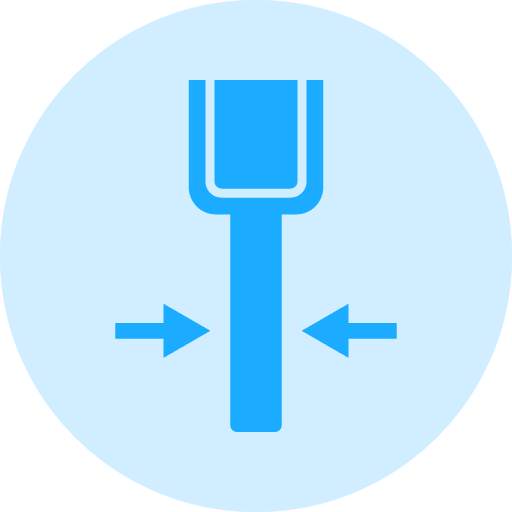
Diamond & CBN Wheel Thickness
The thickness of diamond and CBN (Cubic Boron Nitride) grinding wheels varies widely to suit different applications and material processing needs. For precision grinding tasks, wheels are typically thinner, ranging from about 0.5 mm to 10 mm, allowing for meticulous and detailed material removal. Cut-off wheels, used primarily for slicing through materials, tend to be even thinner, with thicknesses from 0.1 mm to 3 mm to facilitate precise cuts. Conversely, surface and tool grinding wheels, which are used for more extensive surface grinding, generally have thicknesses from 3 mm to 40 mm. For heavy-duty grinding operations involving large workpieces or substantial material removal, wheel thickness can be significantly greater, often from 10 mm up to 100 mm or more.
The thickness of a diamond or CBN grinding wheel directly impacts its grinding performance. Thicker wheels facilitate higher material removal rates, making them suitable for heavy-duty grinding tasks but tend to generate more heat and require more power. Thinner wheels excel in precision grinding tasks due to their ability to produce finer finishes and more detailed work. They also dissipate heat more effectively, minimizing thermal damage to both the wheel and the workpiece.
Stability increases with wheel thickness; thicker wheels resist bending under pressure, thereby enhancing their lifespan and ensuring consistent performance. However, they may require multiple dressings over their lifespan to maintain effectiveness. Thinner wheels, while more flexible for precision work, wear out quicker as they contain less material for dressing.
.
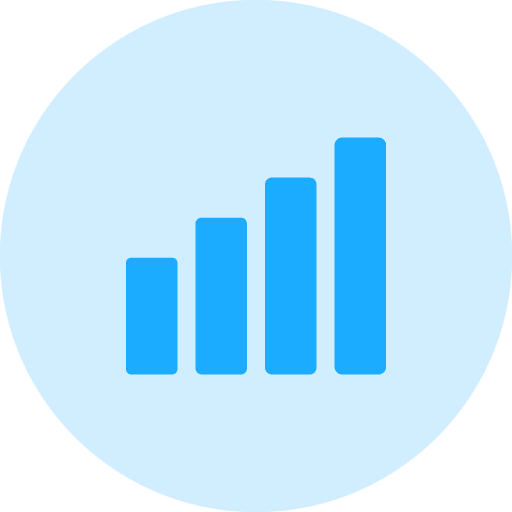
Feed Rates
Feed rates in diamond and CBN grinding wheels are essential for achieving optimal grinding performance, balancing material removal, surface finish, and wheel life. The rate at which the workpiece is fed into the wheel depends on factors such as material hardness, wheel type, depth of cut, and the desired surface finish. Harder materials require slower feed rates to prevent damage and excessive wheel wear, while softer materials can tolerate higher feed rates. Deeper cuts also necessitate slower feed rates to avoid overloading the wheel.
Faster feed rates increase productivity but may sacrifice surface finish and reduce wheel life, while slower feed rates provide better control, finer finishes, and longer wheel life. Properly balancing the feed rate based on the material and grinding conditions ensures efficient grinding, quality results, and longer-lasting wheels. Adjusting the feed rate to match the needs of the specific task is key to optimizing performance and prolonging the life of diamond and CBN grinding wheels.

Diamond & CBN Wheel Speeds/RPM’s
The RPM (Revolutions Per Minute) of diamond and CBN grinding wheels plays a key role in determining grinding performance. Harder materials like ceramics and hardened steel typically require lower RPMs to prevent overheating and excessive wear, while softer materials can be ground at higher RPMs. Larger wheels, due to their size, should run at lower speeds compared to smaller wheels, which can handle higher RPMs.
For fine precision and smooth surface finishes, lower RPMs are ideal, providing better control and reducing the risk of surface damage. Higher RPMs can be used for faster material removal but require careful attention to heat generation and wheel wear. Excessive RPMs can cause overheating, damaging both the wheel and the workpiece, particularly with heat-sensitive materials.
In general, diamond and CBN wheels operate effectively within a range of 3,000 to 6,000 RPM, depending on the material and wheel size. Adhering to optimal RPMs ensures efficient grinding, longer wheel life, and better overall results.

Diamond Particle/Grit size
In diamond and CBN grinding wheels, the particle or grit size profoundly influences several aspects of the wheel's performance. Coarser grits enable faster material removal rates due to their aggressive cutting action, which is beneficial for increasing productivity in scenarios where high grinding speeds are necessary. Conversely, finer grit sizes produce a smoother finish, as the smaller particles make less aggressive cuts, reducing surface roughness. This is crucial for applications that demand a high-quality finish.
The amount of chipping during grinding is also impacted by the grit size. Finer grits typically result in less chipping, making them suitable for grinding brittle materials or when precise, clean edges are essential. However, coarser grits might cause more significant damage to the material’s microstructure because of their aggressive nature, which could be problematic in precision engineering applications where the integrity of the material is critical.
Selecting the appropriate grit size is vital for optimizing both the material removal rates and the quality of the finished surfaces. Coarse grits are preferred for rapid material removal when finish quality is less critical, while finer grits are ideal for achieving high-quality finishes and minimizing damage, particularly in delicate or precise grinding tasks.
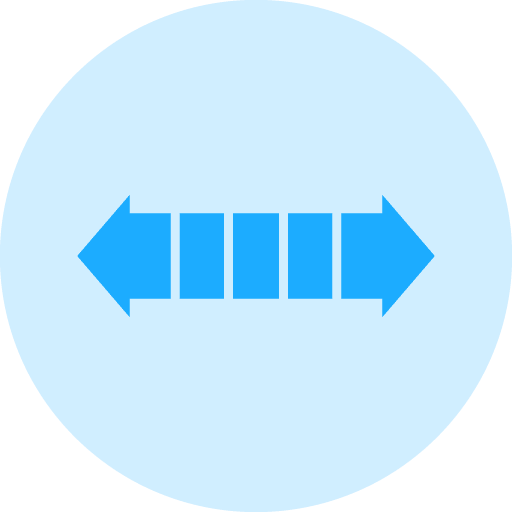
Bond Hardness
For diamond and CBN grinding wheels, the hardness of the bond matrix is crucial in determining how effectively the diamonds or CBN particles are held in place. As the hardness of the bond increases, so does its capability to retain these abrasive particles, which can extend the life of the grinding wheel. However, a harder bond typically results in a slower grinding speed.
Grinding wheels are categorized based on the hardness of their bonds, ranging from Soft, Medium, to Hard, with numerous variations and classifications within these categories to suit different materials and applications..
Selecting the optimal bond hardness for your specific application is essential for achieving efficient and precise grinding results. A bond that is too soft for the material being ground tends to release the abrasive particles too quickly. This premature release can lead to faster wear and a reduced lifespan of the grinding wheel. Conversely, a bond that is too hard can impede the grinding speed, .
necessitating frequent dressing of the wheel to expose new layers of abrasive particles.
As a general guideline, harder materials such as sapphire and alumina benefit from grinding wheels with softer bonds, which allow for more aggressive material removal without compromising the integrity of the wheel. Softer or more brittle materials, on the other hand, are better matched with harder bonds, which help prevent excessive wear and maintain the wheel's effectiveness over time.

Diamond & CBN Outside Diameter
These diameters are carefully chosen based on the specific needs of the application, the properties of the material being cut, and the capabilities of the cutting machine. Resin diamond cut off blades & cutoff wheels, which are available in sizes ranging from 1 inch to 20 inches in diameter, offer varied capabilities based on their size. The diameter of the blade should be chosen with consideration to the diameter and thickness of the material being cut. Smaller diameter blades, which tend to be thinner, are more susceptible to bending and warping during use. On the other hand, larger diameter blades, being thicker, provide greater stability and are typically employed for cutting larger and heavier materials. These larger blades can handle higher loads and speeds, making them suitable for more demanding cutting tasks.
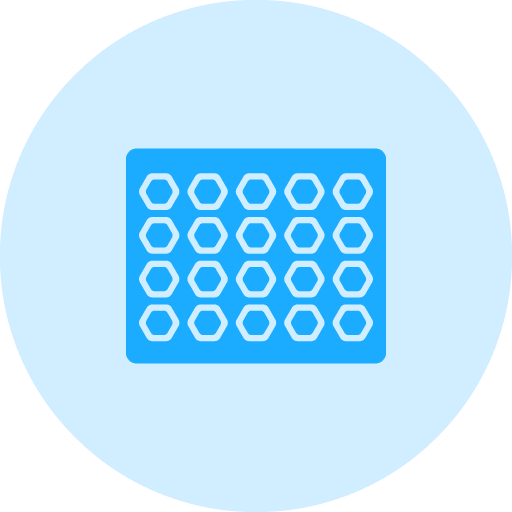
Diamond & CBN Bond Type
Diamond and CBN grinding wheels are available with various bond types, each suited for specific grinding applications.
Resin Bond wheels are popular for tool, cutter, and precision grinding due to their self-sharpening properties and fast cutting speeds. They offer a balance between material removal, wheel life, and finish.
Metal Bond wheels provide durability and long life, excelling in high-precision applications like grinding hard materials (e.g., ceramics, glass, hardened steels). Though slower cutting, they are highly wear-resistant.
Vitrified Bond wheels are rigid and heat-resistant, ideal for high-speed grinding. Their porous structure aids in chip clearance and cooler operation, making them perfect for precision grinding.
Electroplated Bond wheels feature a single layer of abrasives bonded with nickel, maintaining excellent form stability. They are used for precise profile grinding but have a shorter lifespan.
Hybrid Bonds combine resin, metal, or vitrified components to balance cutting efficiency, finish, and wheel life, making them suitable for demanding grinding tasks.
Selecting the appropriate bond type ensures optimal performance, finish quality, and wheel longevity for specific materials and grinding operations.
Related Products
SMART CUT® DISCO DIAMOND & CBN WHEELS
SMART CUT® 15V9 DIAMOND & CBN WHEELS
SMART CUT® 15A2 DIAMOND & CBN WHEELS
SMART CUT® 14V1R DIAMOND & CBN WHEELS
SMART CUT® 14F1R DIAMOND & CBN WHEELS
SMART CUT® 14F1R SCHMIDT TEMPO DIAMOND & CBN WHEELS
SMART CUT® 14F1R LOROCH DIAMOND & CBN WHEELS
SMART CUT® 14F1M DIAMOND & CBN WHEELS
SMART CUT® 14BB1 DIAMOND & CBN WHEELS
SMART CUT® 14A1R DIAMOND & CBN WHEELS
Recently Viewed Products

ARE YOU USING RIGHT TOOLS
FOR YOUR APPLICATION?
LET US
HELP YOU
HAVING ISSUES WITH
YOUR CURRENT TOOLS?
Knowledge Center
02
Nov
Coolant is one of the most overlooked variables in the overall diamond or cbn tool machining process. Effective and proper use of coolant and recalculating coolant system will pay off in terms of improved surface...
29
Aug
Selecting the Right Coolant Method for your Diamond & CBN Tools
Coolant is one of the most important factors in CNC machining when using diamond and CBN tools. These tools are made to cut and grind very hard materials, which naturally produces high amounts of friction...
02
Jun
How to Selecting Right Diamond Tools for your application
Selecting the appropriate Diamond & CBN Tool specification is a crucial aspect of achieving your objectives. Opting for the ideal specification not only yields optimal results but also ensures the best return on investment. Conversely,...
02
Jun
How to properly use Diamond Tools
UKAM Industrial Superhard Tools manufactures precision diamond tools for a large variety of applications, materials, and industries.
Share this Article with Friend or Colleague
Metal Bonded Diamond Tools are “impregnated” with diamonds. This means that selected...
02
Jun
Why use diamond
Diamond is the hardest material known to man kind. When used on diamond/tools, diamond grinds away material on micro (nano) level. Due to its hardness Diamond will work all types of materials from...
02
Jun
Diamond vs CBN (cubic boron nitride) Tools
Cubic Boron Nitride (CBN) is a synthetic material that is renowned for its exceptional hardness and high thermal stability. It is composed of boron and nitrogen atoms arranged in a crystal lattice structure, similar to...
02
Jun
What is Diamond Mesh Size and how to select best one for your application
Diamond grit size can be defined as the size of the diamond particles used in the bond matrix. The larger the diamond particles (grit size) the faster the tool will cut.
Share this Article with Friend or...
02
Jun
What is Diamond Concentration and which to use for your application
Diamond concentration is measured based on the volume of diamond within a section of the tool. It is typically defined as Concentration 100, which equates to 4.4 carats per cubic centimeter of the diamond layer...
17
May
Choosing The Correct Diamond Bond Type
Selecting the appropriate diamond bond type for specific applications is crucial for several reasons. Diamond bond type directly affects the tool's performance, efficiency, and longevity. Different bond types determine how well a tool can withstand...























































